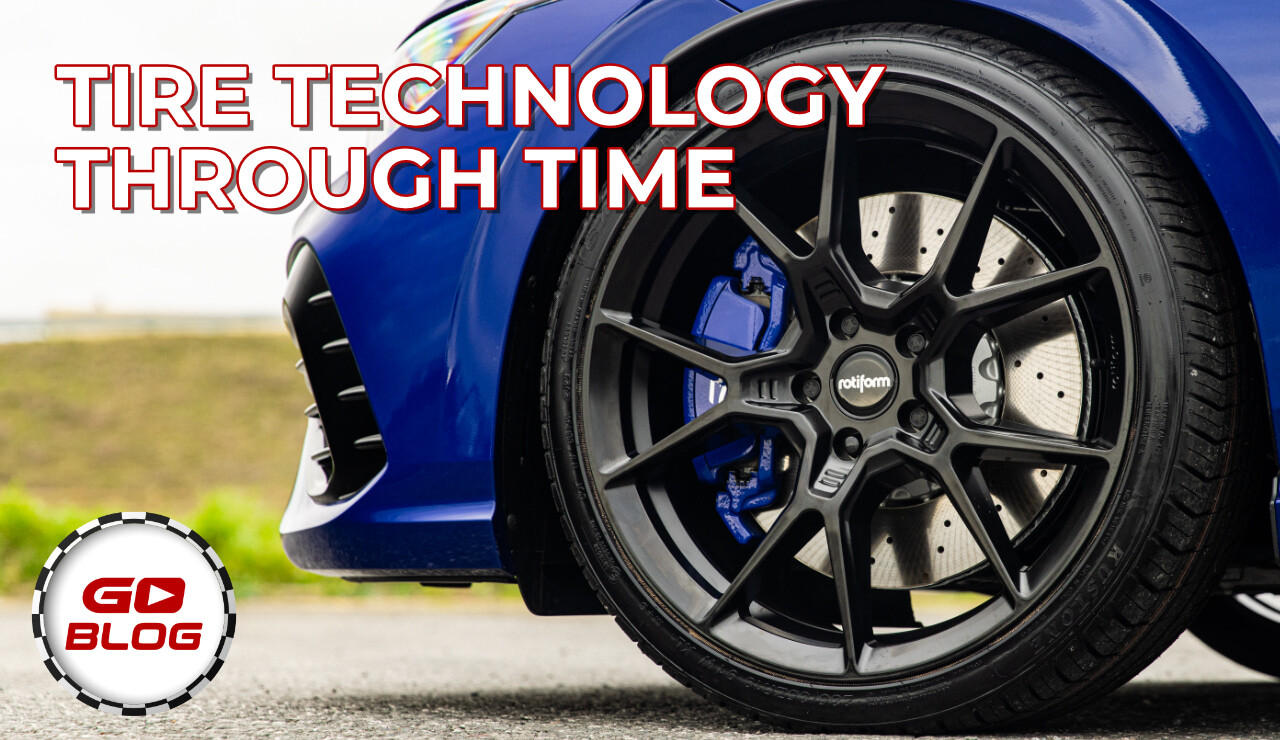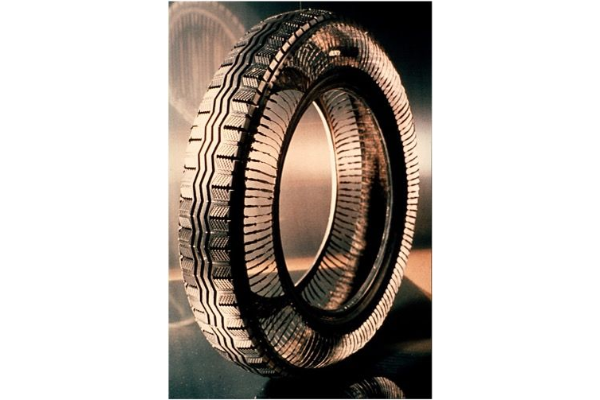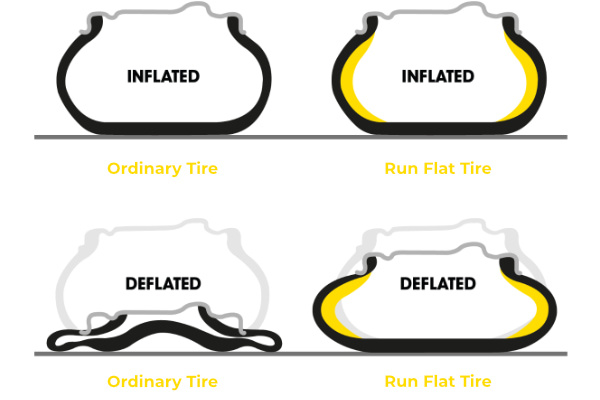The Evolution of Tire Technology: From Pneumatics to Run-Flats
Posted by WheelSetGo on 5th Jul 2024

The Evolution of Tire Technology: From Pneumatics to Run-Flats
The history of tire technology is a fascinating journey of innovation and improvement, driven by the constant pursuit of better performance, safety, and durability. This blog post delves into the major milestones and advancements that have shaped tire technology from its early beginnings to the sophisticated run-flat tires of today.
The Dawn of Pneumatic Tires
The story of tire technology begins in the mid-19th century with the invention of the pneumatic tire. In 1845, Robert William Thomson, a Scottish engineer, patented the first pneumatic tire, which used an air-filled rubber tube to cushion the ride. However, it was John Boyd Dunlop, another Scotsman, who is often credited with popularizing pneumatic tires. In 1888, Dunlop developed a practical pneumatic tire for his son’s bicycle, significantly improving ride comfort and performance. This innovation quickly gained popularity and was soon adapted for automobiles, revolutionizing the transportation industry.
The Rise of Radial Tires
The next major breakthrough came in 1946 when Michelin introduced the radial tire. Unlike traditional bias-ply tires, radial tires featured a construction with steel belts running perpendicular to the tread, providing enhanced flexibility and strength. This design offered several advantages, including improved fuel efficiency, longer tread life, better road handling, and a more comfortable ride. Radial tires quickly became the industry standard and remain dominant to this day.

The Advent of Tubeless Tires
In the 1950s, the development of tubeless tires marked another significant advancement. Prior to this, tires relied on inner tubes to hold air, which were prone to punctures and leaks. Tubeless tires, which used a reinforced rubber liner to create an airtight seal with the rim, reduced the risk of sudden deflation and made tires more durable and reliable. This innovation greatly enhanced safety and convenience for drivers.
The Introduction of Steel-Belted Radial Tires
Building on the radial tire technology, steel-belted radial tires emerged in the 1960s. These tires incorporated steel belts beneath the tread, offering superior durability and performance. The steel belts provided additional strength, reduced rolling resistance, and improved traction. This advancement was particularly beneficial for heavy vehicles and high-speed driving, contributing to the widespread adoption of steel-belted radial tires.
The Emergence of Run-Flat Tires
One of the most significant recent advancements in tire technology is the development of run-flat tires. Introduced in the late 20th century, run-flat tires are designed to maintain functionality even after a puncture or loss of air pressure. They typically feature reinforced sidewalls or internal support rings that allow the vehicle to continue driving for a limited distance at reduced speeds, providing drivers with greater safety and convenience.

Run-flat tires eliminate the need for carrying a spare tire, freeing up space and reducing vehicle weight. However, they also come with some trade-offs, such as a stiffer ride and higher cost. Despite these drawbacks, run-flat tires have gained popularity, especially in luxury and high-performance vehicles.
Innovations in Tire Materials and Design
In addition to structural advancements, tire technology has also seen significant improvements in materials and design. Modern tires utilize advanced rubber compounds that enhance traction, wear resistance, and fuel efficiency. Computer-aided design (CAD) and simulation technologies have enabled engineers to optimize tread patterns for specific driving conditions, improving performance and safety.
The development of all-season and specialized tires, such as winter and off-road tires, has further expanded the capabilities of modern tires. These innovations ensure that drivers can find the perfect tire for their needs, whether they are navigating icy roads, rugged terrain, or urban streets.
The Future of Tire Technology
Looking ahead, tire technology continues to evolve with exciting innovations on the horizon. Researchers are exploring the potential of airless tires, which use flexible, honeycomb-like structures to provide support and shock absorption. These tires promise to eliminate the risk of punctures and reduce maintenance requirements.
Smart tires, equipped with sensors and connectivity features, are also in development. These tires can monitor and communicate real-time information about tire pressure, temperature, and wear, enhancing safety and performance through advanced data analytics.
Wrapping Up
The evolution of tire technology is a testament to human ingenuity and the relentless pursuit of progress. From the early pneumatic tires to the sophisticated run-flat designs of today, each milestone has brought significant improvements in safety, performance, and convenience. As technology continues to advance, the future of tire technology promises even greater innovations that will further enhance the driving experience.
At WheelSetGo, we are committed to keeping you ahead of the curve with the latest in tire technology. Whether you need expert advice on choosing the right tires for your vehicle or are ready to upgrade to the newest innovations, our team is here to help.
Don't miss out on the best in tire advancements—give us a call at 320-247-6160 today and let us help you drive confidently into the future with the perfect tire and wheel solutions for your needs.
